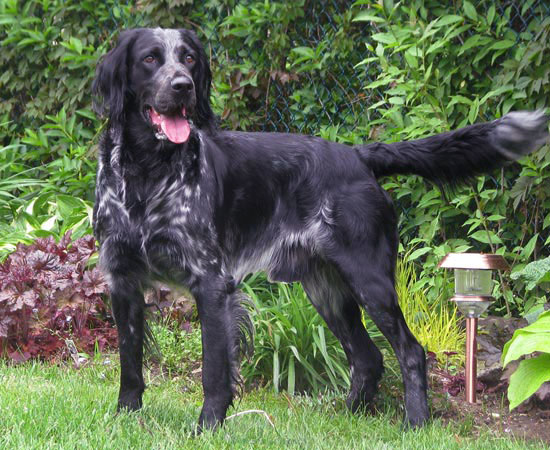
Favorite hunting grounds have sometimes lead to the creation of some terrific breeds, if unwittingly. In the 19th and early 20th century, France was a popular destination for hunters from Great Britain who crossed the English Channel with their dogs to get there. Brittany’s sandy moors and the Picardie marshes in particular became favorite grounds for many setter and spaniel owners, but when the British quarantine was implemented, these hunters were prohibited from reentering the country with their dogs. Many of the sportsmen boarded their English Setters or Gordon Setters on Picardie farms where local Picard Spaniels bred with them. The result? The Blue Picardy Spaniel, or BPS, also known as the Epagneul Bleu de Picardie.
Blue Picardies are particularly clever at hunting snipe in marshy land, but are overall excellent field dogs who make wonderful family companions: Quiet, playful, and steadfast. The blue tinge on their coat is roan in nature and made up of white, grey & black hair with solid black patches that can range from blue-grey to blue black and almost black. Puppies are born white with black patches – the roaning color developing as they mature.
Though the breed’s roots are partially British, the Blue Picardy Spaniel is regarded as a French pointing dog. When the Picard Spaniel and Blue Picardy Spaniel Club was formed in 1907, the two different breeds of Picardy Spaniel were specified, but in 1938, France recognized the Blue Picardy as a separate breed. While the BPS isn’t registered with the AKC, the Canadian Kennel Club accepted the breed in 1995, and the FCI followed suit in 1998.
Image of “Suede,”shared with consent by the owner/photographer, Kim Ratigan/Brighthope Kennels

Wow, happy to read about our rare Picardy Spaniels.
We’d love to write more about them, iia, and if you have any topics to suggest, please let us know?